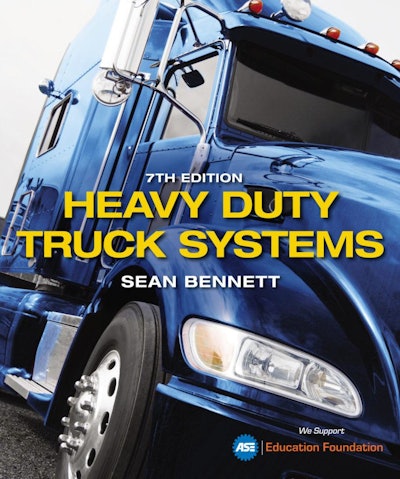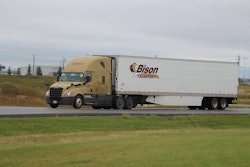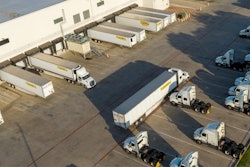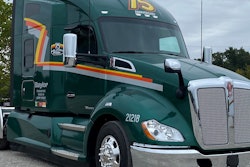I grew up in the trucking industry, the machine shop industry and the "hell no we won't go" anti-war movement.
In the process, I discovered there really is a military-industrial complex. Just the other day, I was explaining to a business associate why military equipment costs so much. I used my real-life example as a young man with a draft card in his wallet that listed me as 1-A and 2-S most of the time.
During the day, I attended college and worked swing shift at a defense plant making aircraft fasteners. We made exploding bolts, among other things. These were used to literally blow the canopy off a jet fighter when pilots decided to eject.
I was an exploding bolt inspector some of the time. We would build exploding bolts in batches of 300. For 150 bolts to pass inspection, we would blow up 150 bolts. That right there doubles the price, right? If one bolt failed, we blow up the other 150 bolts. As far as I remember, on my watch, never once did a bolt in the second round of testing fail. It could take manufacturing 600 bolts to get 150 good ones.
What's that cost? So assuming pilots' lives are worth saving, and we don't want fighter jets falling out of the sky, things can quickly get expensive.
I saw a recent survey on LinkedIn that asked, "Did you intend on being in sales?" or "Did you just fall into sales?" I got into sales because the old axiom is true, "Nothing happens until someone sells something."
I was an industrial engineer and had to "sell" an appropriations committee on purchasing a package of material handling and warehousing equipment. I had heard through the grapevine that the committee thought it was their duty to shred young engineers into tiny bits and try to make them cry, so I prepared. I insisted that I attend a trade show so I could meet potential vendors one-on-one. Buying and selling are different sides of the same coin. I took copious notes.
I found two kinds of salesmen at that show: those who tried to sell me, like I was the actual buyer, and the ones I ended up doing business with, which were the ones who asked me the probing questions and found out that I was going to be their stand-in salesman.
I was the one that was going to be selling their products to the committee they would never get an opportunity to address in person. The smart salesmen taught me about their product and how to sell it. Smartest tip from that trade show: deal with objections in your presentation. Don’t wait for the appropriations committee to raise them. There will still be questions that some might consider an objection. Don’t treat a question like an objection. It is possible there are questions you have not thought of, and treat them as such – just a question.
I was one the most prepared and practiced presenters the committee had encountered in years. My request for appropriations was approved on the spot. As I was leaving, the logistics manager commented to me, "We don't need young whippersnappers like you coming up here and getting this kind of money on the first try."
A few days later I got a call from the national sales manager. He introduced himself as Walt Rishel (now deceased) and said, "I understand you want to join the sales team." The logistics manager was serious. He told Walt, “This kid needs to be hustling customers not the appropriations committee."
As serendipity would have it, he needed someone based in Southern California, where I had grown up and attended college.
My first sales position did not have sales in the title: Regional manager, not regional sales manager. Walt said, "Never tip your hand that you might be there to sell something and, besides, we've got the sales. We just need to manage to keep them. Everyday someone will cause a problem for your customers, or your customer will create an issue for our company in your region. You have to manage to keep what we got and get more."
I never would have left that position except a customer loved the deals I put together; and made me an offer I couldn't refuse.
I have attended many industry trade shows. If you need convincing that trade shows are worth every penny one spends to attend, you should quit reading right now. We are not on the same page. I would always set a goal for a trade show – usually a very lofty goal.
My goal at one TMC meeting was to introduce every OEM field service engineer to my client's product. Many of the OEM field service engineers owed me a favor or two because of the way I managed my region. Problems solved to everyone's satisfaction usually ended with a statement by a field service engineer: “I owe you one.”
One of the field service engineers, as a favor to me, said I could ship a case of Counteract Balancing Beads (CBB) to his office and he would get them into the hands of the R&D department. One reason he agreed to help me was that he was a short-timer in addition to “owing me one.”

Roger and Daniel opened to Chapter 27, "Wheels and Tires," found the tire balancing section, and then, to their surprise, found this list of balancing techniques:
- Spin balancing
- Off-the-vehicle dynamic balancing
- Off-the-vehicle static balancing
- Counteract Balancing Beads
There it was. Roger's invention – his baby – in a textbook, in black and white. I wish I had been there to see the look on their faces. But I did get an excited Roger on the phone with a barrage of questions, starting with, "Did you know Sean Bennett?"
Sean Bennett was easy to track down. He was in the TMC directory. He told me that he ended up with the missing case of balancing beads. He got to study and test them as part of his job at the OEM's R&D and training center.
"They work. I just had to include them in my textbook," he told me.
We made plans to meet at the next TMC meeting. Roger instructed me to be sure to take Sean out to the most expensive restaurant in town and thank him for doing an excellent service for the trucking industry. Sean and I have kept in touch since then and will be collaborating on solving the problems of the trucking world in the future.












